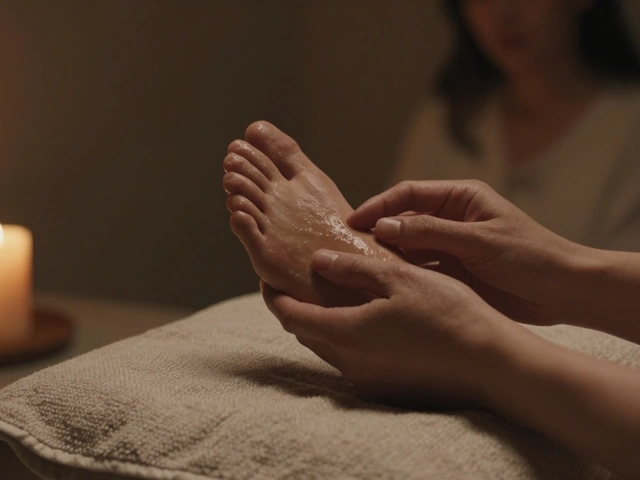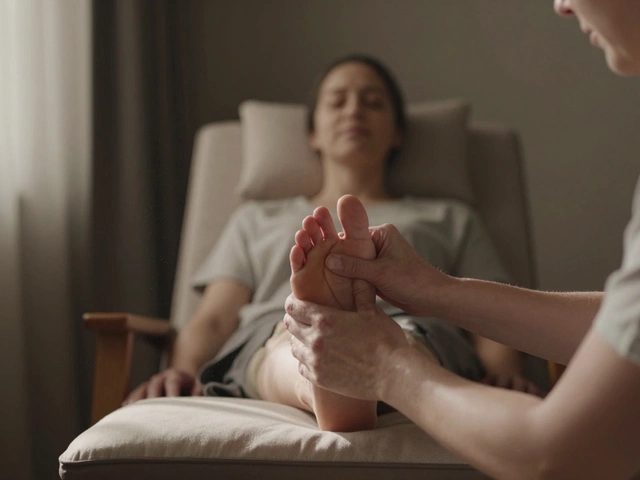Understanding Prenatal Massage
Imagine a therapy that not only relaxes but also tends to the unique needs of your body as it undergoes the numerous changes of pregnancy. That's prenatal massage. Unlike regular massage therapy, prenatal massage is specifically designed to provide relief and comfort to expectant mothers. With a blend of gentle pressure and supportive techniques, it not only eases muscle tension but also promotes circulation and mobility—all while being mindful of the baby and mother's safety.
For those unfamiliar, the concept might seem akin to any other massage, but the distinction lies in the nuanced understanding and care administered. The therapist's knowledge of pregnancy anatomy allows them to tailor their approach, ensuring both comfort and efficacy. As we delve further into this guide, keep in mind that while prenatal massage offers numerous benefits, it's always wise to consult with a healthcare provider before embarking on any new wellness regimen during pregnancy.
The Benefits: More Than Just Relaxation
The soothing touch of a prenatal massage offers more than just relaxation. It's a holistic remedy that addresses both physical and emotional strains of pregnancy. From alleviating back pain, which is common as the belly grows, to reducing edema (swelling) by enhancing blood flow, the benefits are multifaceted. Moreover, prenatal massage has been shown to improve mood, decrease anxiety, and even better the outcome of labor and newborn health.
Expectant mothers often find relief from sciatic nerve pain, a common discomfort in the latter stages of pregnancy, as prenatal massage helps release tension around the sciatic muscle areas. On top of physical benefits, the emotional comfort provided through touch can significantly lower stress levels, contributing to a more serene pregnancy experience. These advantages underscore why prenatal massage is a recommended practice for most pregnant women, offering a natural, non-invasive path to well-being and comfort.
Safety First: Precautions and Considerations
While the appeal of prenatal massage is undeniable, safety should always come first. Certain conditions during pregnancy can make massage therapy risky. For instance, expectant mothers experiencing high blood pressure, gestational diabetes, or morning sickness might need to approach prenatal massage with caution or under strict medical advice. Additionally, the massage should always be performed by a certified prenatal massage therapist who understands the intricacies of pregnancy and can adjust techniques accordingly.
It's also essential to consider the stage of pregnancy when planning a massage. The first trimester carries a higher risk of miscarriage, so many professionals recommend waiting until the second trimester. During the massage, various pillows and supports are used to ensure the mother's and baby's safety and comfort, adapting as pregnancy progresses. Remember, listening to your body and communicating with your therapist is key to a safe and beneficial prenatal massage experience.
Choosing the Right Therapist
Finding a qualified prenatal massage therapist is crucial. Look for someone certified in prenatal massage, as they'll have the specific knowledge and training to address pregnancy's unique challenges safely. Recommendations from friends, family, or your healthcare provider can be a great starting point. Additionally, ensure the therapist's environment is clean, welcoming, and equipped to accommodate pregnant women comfortably.
During your first interaction, don't hesitate to ask about their experience with pregnant clients and their approach to dealing with common pregnancy ailments. A good therapist will also inquire about your medical history, pregnancy details, and any discomforts to tailor the session to your specific needs. Trust and communication are vital, so choose someone who makes you feel understood and at ease.
Different Techniques for Different Needs
Prenatal massage incorporates a variety of techniques, each with its own set of benefits. Swedish massage is among the most recommended types for pregnant women due to its gentle, soothing nature. It focuses on relieving muscle tension and improving blood circulation, using long strokes and light to medium pressure. For those dealing with specific issues like back pain or sciatica, more targeted techniques such as deep tissue massage may be employed cautiously.
Additionally, certain practices might focus on reflexology or the use of aromatherapy oils to enhance the relaxation experience. However, it's important to use oils that are safe for pregnancy and to avoid any manipulation that could be harmful. The therapist's skill in adapting these techniques to suit the pregnant body's needs is what makes prenatal massage a uniquely comforting experience.
When and How Often to Go
Timing and frequency are common questions regarding prenatal massage. While it ultimately depends on individual needs and medical advice, starting massages in the second trimester and continuing through the third is generally accepted as safe and beneficial. As for frequency, once a month is a standard recommendation to reap ongoing benefits without overdoing it. However, some may find that increasing sessions as the due date approaches helps manage late-pregnancy discomfort more effectively.
Listening to your body is crucial. If you find particular relief or benefit from the sessions, discussing an adjusted frequency with your therapist and healthcare provider could be advantageous. Remember, the goal is to support your well-being and comfort throughout pregnancy.
Preparing for Your Prenatal Massage
Getting the most out of your prenatal massage session starts with proper preparation. Wear comfortable clothing to the appointment, and ensure you're well-hydrated. Discuss any recent changes in your pregnancy or specific areas of discomfort with your therapist beforehand. Creating a comfortable environment where you can relax fully is essential, so feel free to ask for adjustments in room temperature, lighting, or music to suit your preferences.
After the massage, take your time getting up and drink plenty of water to help flush toxins from your body. Some may experience slight soreness after a massage, but this is normal and usually subsides within a day or two. Sharing feedback with your therapist will also help tailor future sessions to your needs better.
Conclusion: Embracing the Journey with Prenatal Massage
Embarking on the journey of pregnancy is a monumental period in a woman's life, filled with joy, anticipation, and its share of challenges. Prenatal massage emerges as a supportive companion through this journey, offering a blend of physical relief, emotional support, and a moment of tranquility amidst the whirlwind of pregnancy. By choosing the right therapist, adhering to safety precautions, and embracing this therapy's holistic benefits, expectant mothers can find in prenatal massage a comforting embrace, enriching the pregnancy experience in profound ways.
As we've explored throughout this guide, prenatal massage is more than a luxury; it's a valuable component of prenatal care, alongside proper nutrition, exercise, and medical check-ups. Whether you're navigating pregnancy for the first time or are seasoned in the experience, considering prenatal massage could be one of the most rewarding decisions for your well-being and that of your baby.









